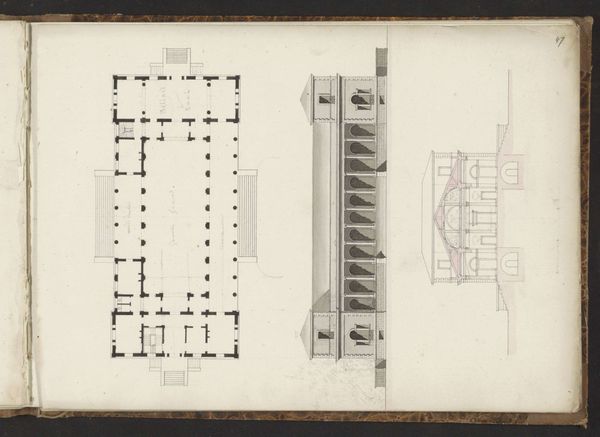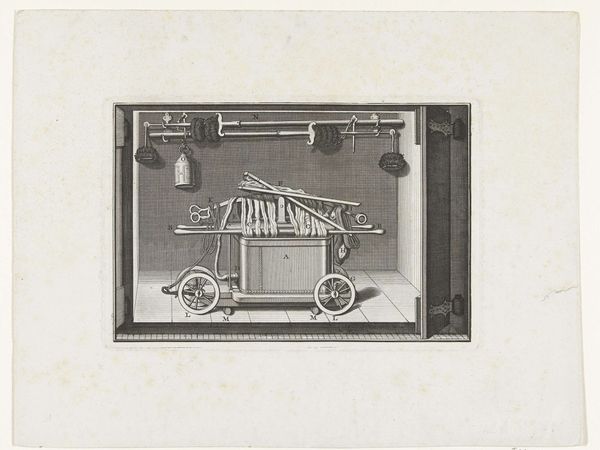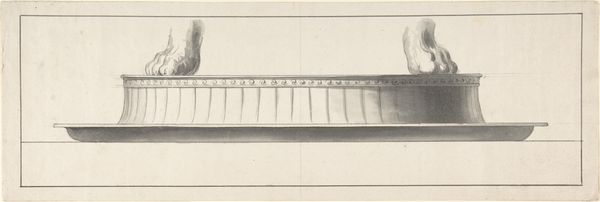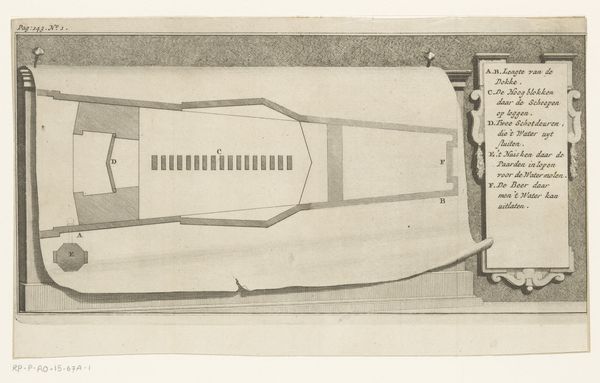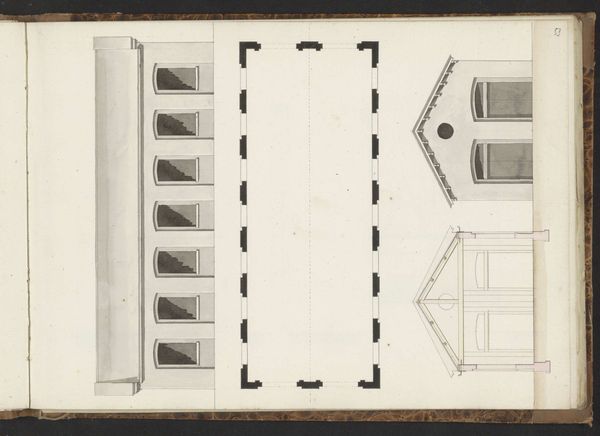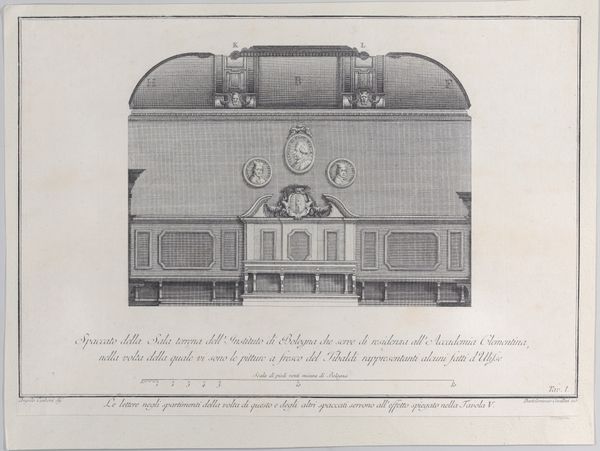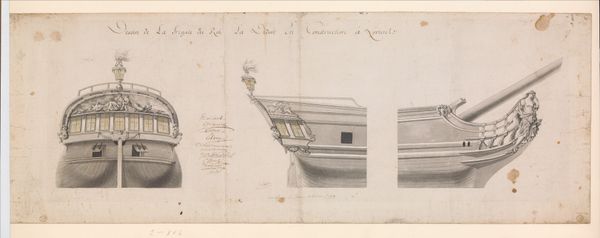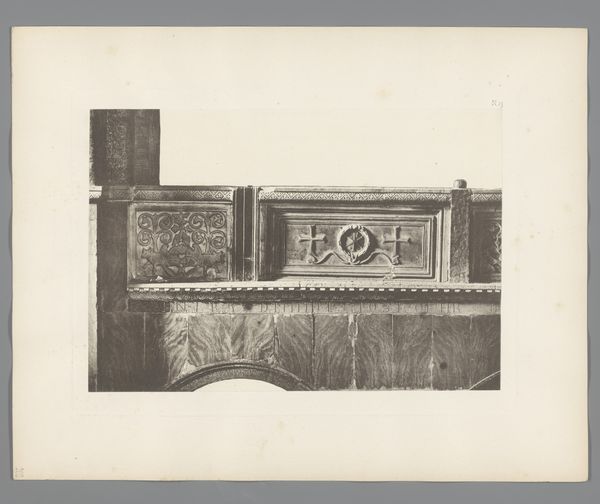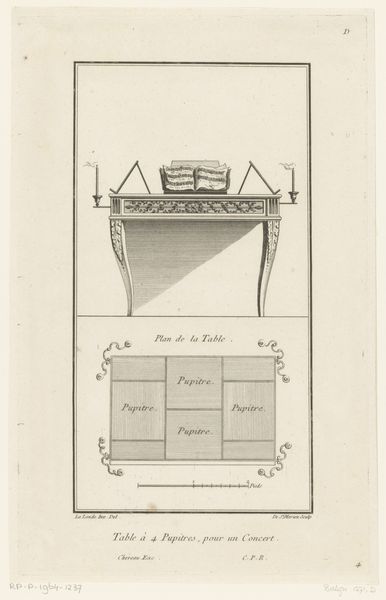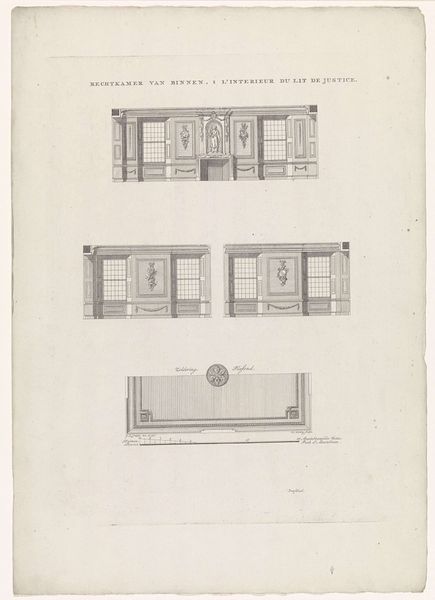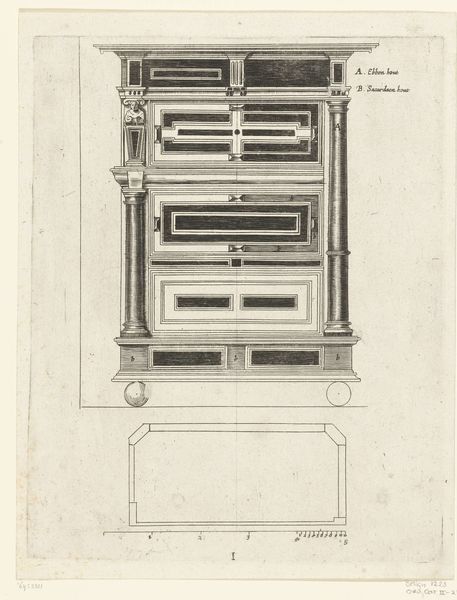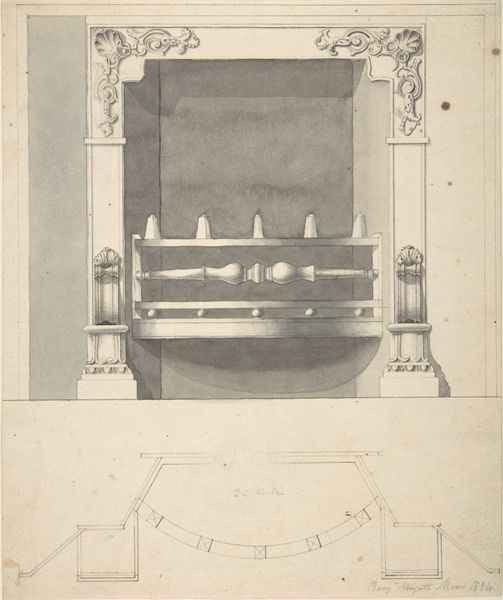
drawing, paper, ink
#
drawing
#
landscape
#
paper
#
ink
#
history-painting
#
academic-art
Dimensions: height 277 mm, width 328 mm
Copyright: Rijks Museum: Open Domain
Curator: The image we're looking at is an ink drawing on paper, titled "Lijkkist van wijlen koning Willem II, 1849." It depicts the coffin of the late King Willem II. Editor: There’s an austerity here, even in rendering the opulence. The grey tones against the white background, combined with the subject, certainly evokes a feeling of solemn finality. Curator: The drawing gives a meticulous, almost architectural rendering of the coffin itself. Notice the detail given to the ornamentation, the miniature crowns adorning the corners, and the layers upon layers of the platform it rests on. The artist is really trying to portray the weight, literally and figuratively, of the monarchy. Editor: Indeed. Looking at it from today's vantage point, one must consider the implications. While presented as a somber depiction of loss, these symbols also carry cultural and historical power. The crowns, the multiple tiers—these are statements of social hierarchy, aren't they? How might the working class viewed it back in 1849? Curator: It's undeniable. And thinking about the historical moment, 1849, just a year after the wave of European revolutions... the piece captures a moment of shifting power dynamics and a clinging to traditional displays of authority. There’s also the implicit symbolism of the empty coffin: absence and the continuation of tradition at the same time. Editor: Right, tradition reinforced even, and perhaps especially, at the moment of supposed absence. It encourages a continuation of particular societal narratives. Curator: Perhaps this work, in its precise and unemotional portrayal, provides space for us to confront the continuing legacy of royalty. The coldness helps it function like a mirror to inherited social constructs, does it not? Editor: Yes. Its lack of emotion, the stark presentation of this elaborate symbol of power… it opens up possibilities to explore how these symbolic displays influence and reinforce existing social orders even today. Curator: Exactly. By laying bare these traditions, maybe we can engage with a deeper examination of the ideologies behind them. Editor: Well, it has certainly encouraged me to reflect on how we memorialize power. A timely consideration given our current political climate.
Comments
No comments
Be the first to comment and join the conversation on the ultimate creative platform.
